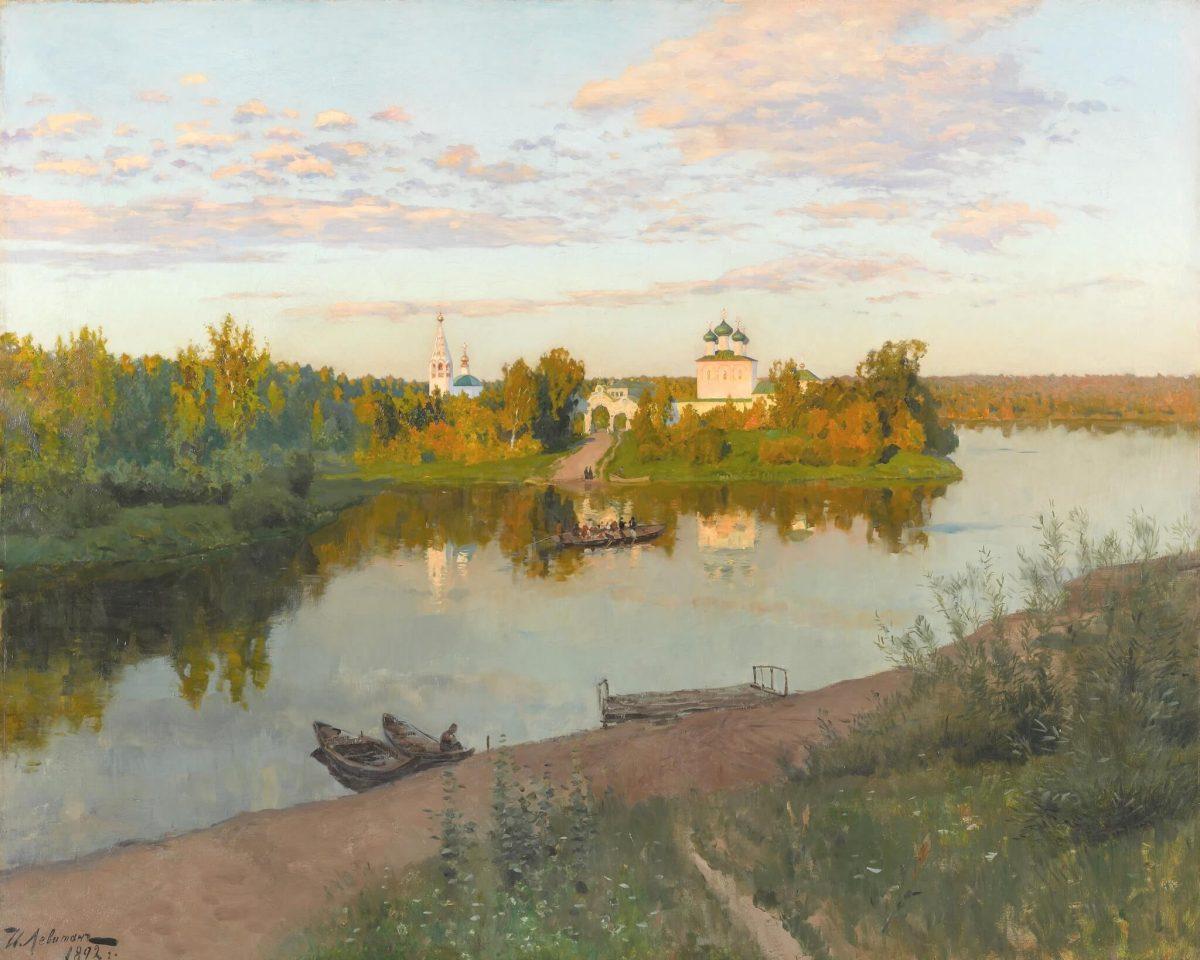
"Evening bells" by Levitan. Solitude, sound and mood
Contents:
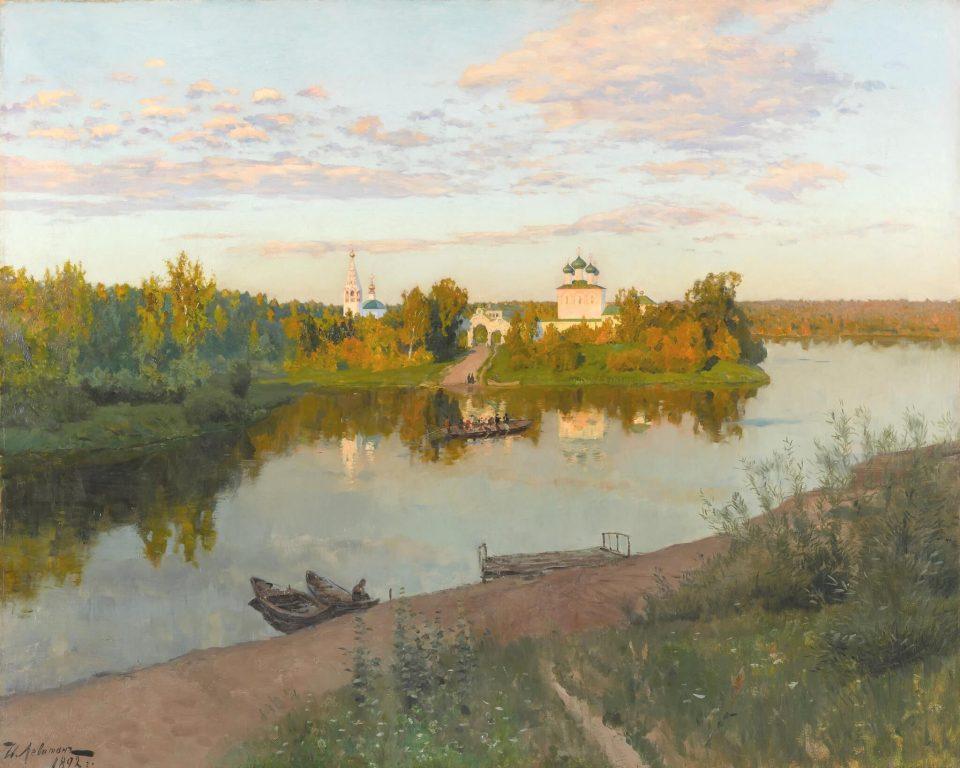
In the summer of 1891, Isaac Levitan went to the Volga. For several years he had traveled the river expanses in search of motives.
And found a stunning landscape plot. The Krivoozersky monastery was surrounded by three lakes. He humbly peered out of the thick of the forest.
Levitan adored such finds. The solitude of the monastery was eager to be transferred to the canvas.
The famous white umbrella is stuck. The sketch is ready. Later, the painting "Quiet Abode" was painted. And a year later - a more solemn "Evening Bells".
Let's take a closer look at the picture. And let's start with the fact that the place depicted in the picture does not exist ...
Landscape from "Evening Bells" fictional
Levitan worked from nature to capture the general features of the landscape. But then in the studio he came up with his own, unique.
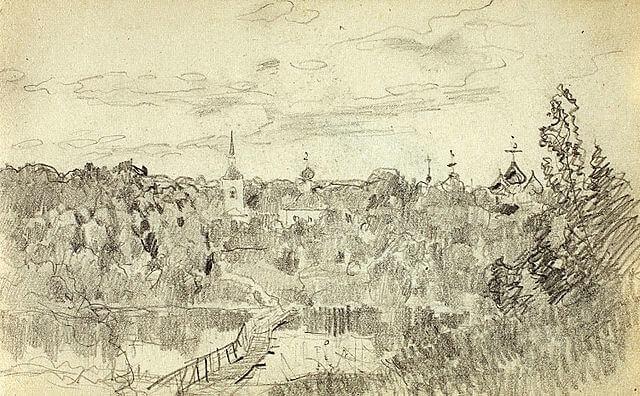
"Evening Bells" is no exception. The Krivoozersky monastery with its surroundings is recognizable, but it has not been copied. The spire was replaced by a hipped dome. And the lakes are on the bend of the river.
That is why it is wrong to call Levitan an impressionist during this period. He didn't capture what he saw. And he invented, building the composition of the picture at his own discretion.
The Krivoozersky Monastery has not been preserved. After the revolution, juvenile delinquents were kept in it, then they kept collective farm potatoes. And then they completely flooded during the creation of the Gorky reservoir.
First there was "Quiet Abode"
"Evening bells" did not appear immediately. First, Levitan painted another painting based on the Krivoozersky Monastery - “A Quiet Abode”.
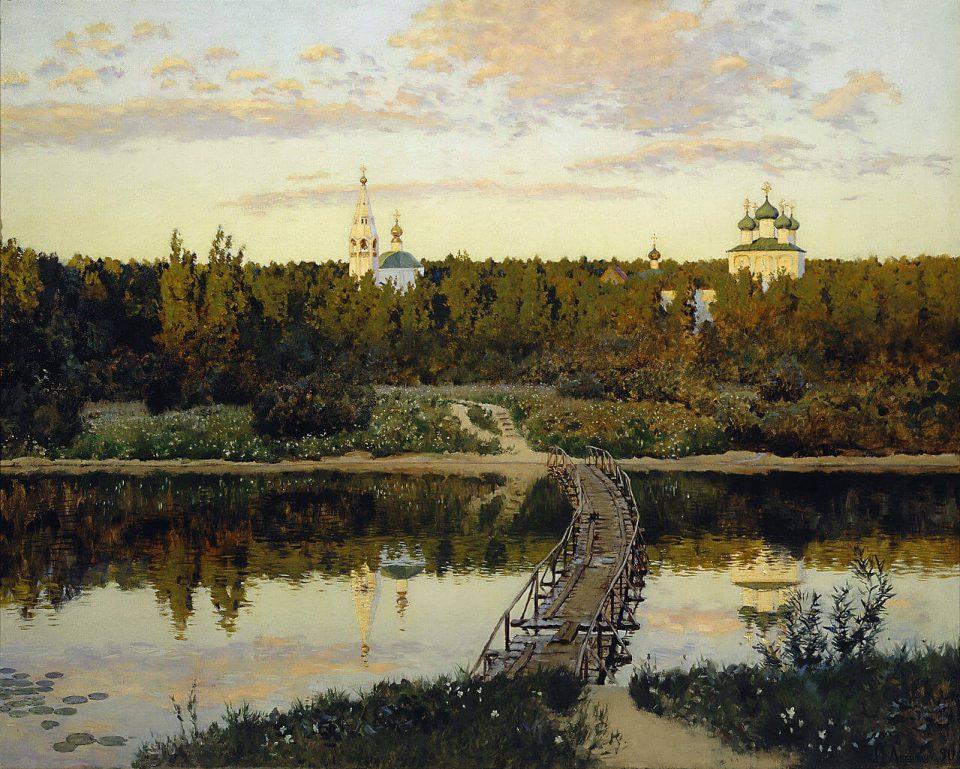
It can be seen that both paintings carry the same idea. The artist shows isolation from the bustle of the world. And with the help of paths and bridges, he draws us to this secluded bright place.
However, the pictures differ in sound. "Quiet abode" is more minor. No people. Here the sun is lower, which means the colors are darker. Solitude in this work is more unambiguous, reference.
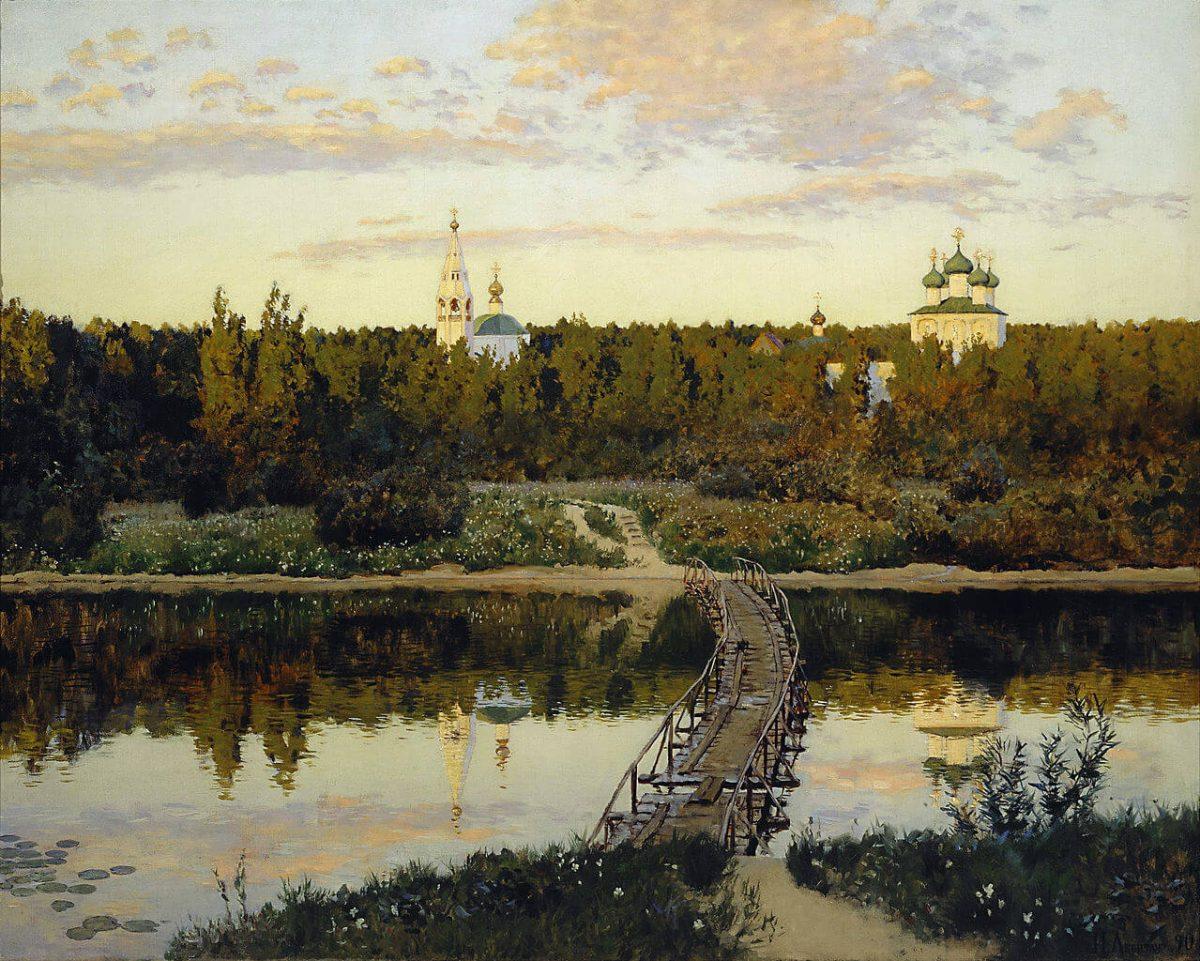
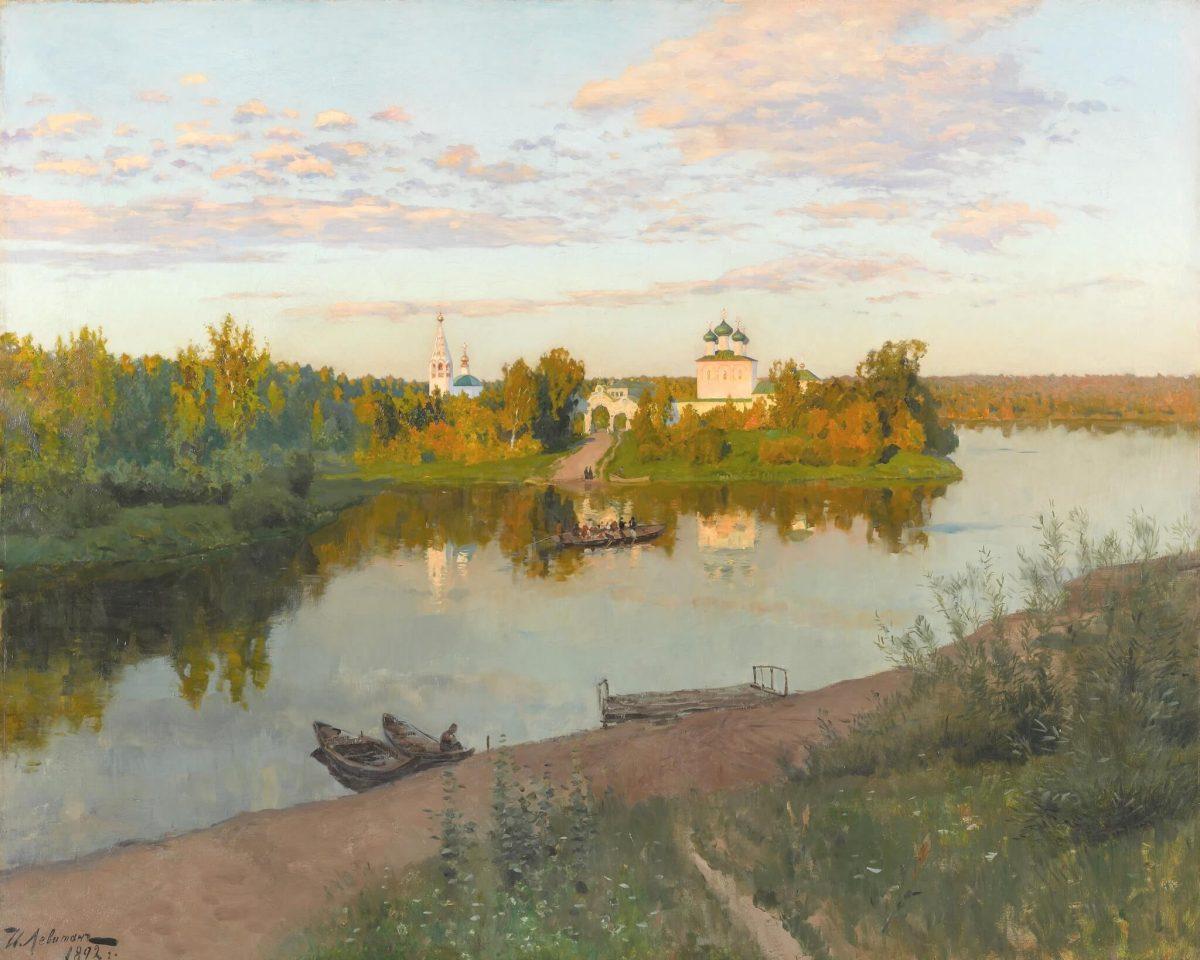
The painting “Evening Bells” is crowded (by Levitan standards), and there is clearly more of the sunset sun in it. Yes, and space too. The front bank was already plunged into twilight. And the bright colors of the opposite shore catch the eye. You definitely want to go there. Especially when the bells are ringing...
Sound in the picture is not an easy task
Calling the picture "Evening Bells", Levitan set himself the most important task - to portray the sound.
Painting and sound seem incompatible.
But Levitan manages to weave music into the landscape. And it looks like an easy to read message.
The master, as it were, says to the viewer: “My painting is called “Evening Bells”. So imagine the melodic overflow of bell voices. And I will support your imagination. Light ripples on the water. Torn clouds in the sky. Shades of yellow and ocher, so suitable for a melodic tongue twister.
We see the same message in Henri Lerol, French realist painter. He wrote "Organ Rehearsal" around the same time.
What did the artist mean? Look for the answer in the article “Forgotten Artists. Henri Leroll".
site “Diary of painting. In each picture there is a story, a fate, a mystery.”
» data-medium-file=»https://i2.wp.com/www.arts-dnevnik.ru/wp-content/uploads/2016/07/image-2.jpeg?fit=595%2C388&ssl=1″ data-large-file=”https://i2.wp.com/www.arts-dnevnik.ru/wp-content/uploads/2016/07/image-2.jpeg?fit=900%2C587&ssl=1″ loading =”lazy” class=”wp-image-2706 size-large” title=”“Evening Bells” by Levitan. Solitude, sound and mood" src="https://i1.wp.com/arts-dnevnik.ru/wp-content/uploads/2016/07/image-2-960×626.jpeg?resize=900%2C587&ssl =1″ alt=”“Evening Bells” by Levitan. Solitude, sound and mood” width=”900″ height=”587″ sizes=”(max-width: 900px) 100vw, 900px” data-recalc-dims=”1″/>
He also paints space, only inside the cathedral. This is where the sound of the voice resides. And then - the hint of the artist. Rhythmic stucco, as it were, denotes sound waves. It also depicts the listeners to whom we mentally join.
There are also listeners in the Evening Ringing. But it's not so easy with them.
Unfortunate details of the painting "Evening Bells"
Levitan did not like to portray people. The figure was given to him much worse than the landscape.
But sometimes the characters clearly asked for the canvas. Including the painting “Autumn Day. Sokolniki.
It is difficult to call a park a park if it is deserted. Levitan did not take risks. He entrusted Nikolai Chekhov (the writer's brother) to draw the figure of a girl.
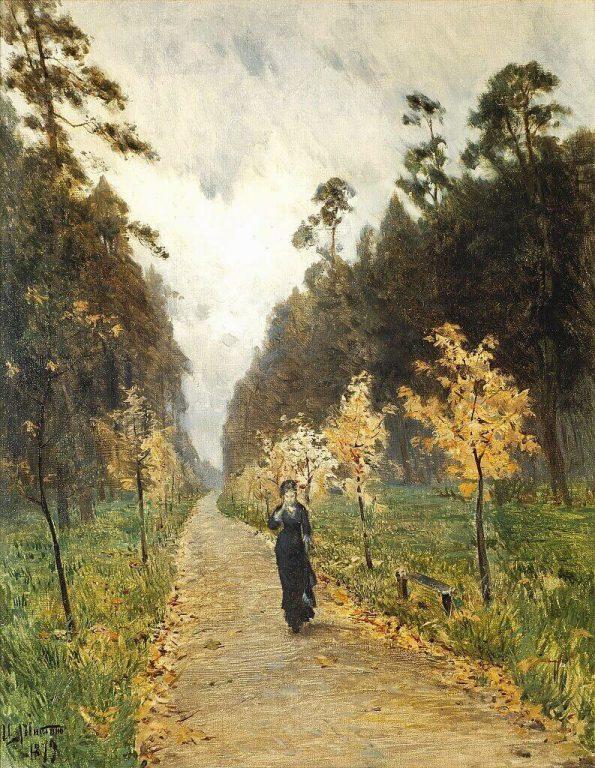

Figures also asked for the painting “Evening Bells”. With them it is easier to imagine the sound.
Levitan painted them himself. But even such small characters came out not very successful. I do not want to criticize the master, but the details are very entertaining.
Look at the seated figure in one of the boats. It seems too small for the foreground. Although, maybe Levitan portrayed a child. But judging by the outlines, it is more likely a woman.


We also see a crowd on a boat in the middle of the river. The figures of people are too miniature to find fault with them.
But something is clearly wrong with the boat. Somehow she leaned over strangely. It also blends in with the reflection in the water.
To be honest, I did not notice this boat for a long time. Question: why was it needed then. After all, the viewer does not notice it. And when he notices, he is puzzled by her skewed appearance.
Maybe that's why Pavel Tretyakov did not buy the work? He was picky about the picturesque merits of paintings. And he could even ask the artist to make corrections.
That is, Tretyakov saw the painting at the exhibition, but did not buy it. She went to the noble family of Ratkov-Rozhnov. They owned several tenement houses in St. Petersburg.
But the picture still ended up in the Tretyakov Gallery. When the remnants of the family fled to Europe in 1918, it was hastily handed over to the museum.


"Evening Bells" - mood landscape
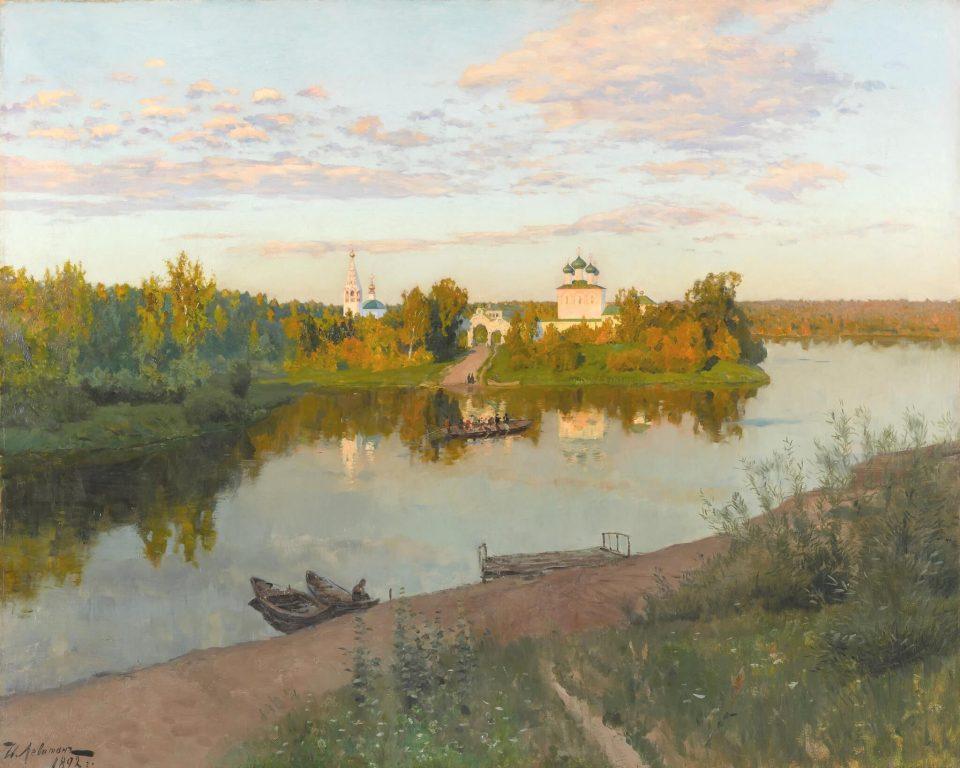

“Evening Bells” is one of the most popular paintings by Levitan. She had no chance to go unnoticed. It contains everything that causes the most pleasant feelings.
Who wouldn't want to sit on the beach on a warm September evening! Look at the quiet water surface, the white walls of the monastery, immersed in greenery, and the evening sky turning pink.
Tenderness, quiet joy, peace. Oil poetry of nature.
Read about other works of the master in the article “Paintings of Levitan: 5 masterpieces of the artist-poet”.
***
Comments other readers see below. They are often a good addition to an article. You can also share your opinion about the painting and the artist, as well as ask the author a question.
Leave a Reply